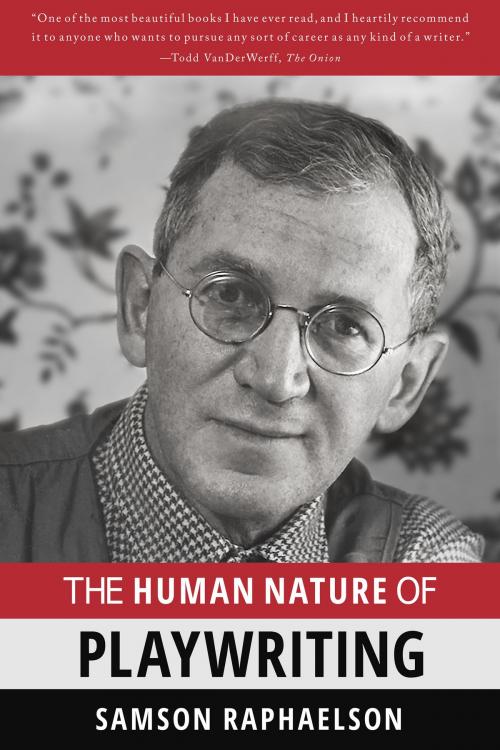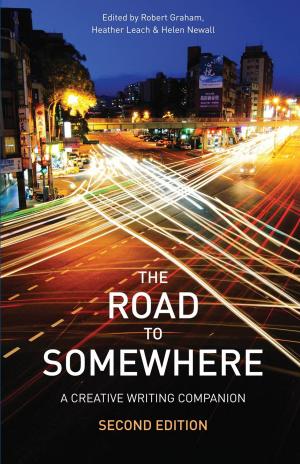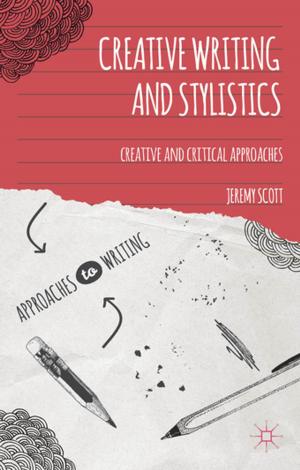The Human Nature of Playwriting
Nonfiction, Reference & Language, Language Arts, Study & Teaching, Writing & Publishing, Publishing, Composition & Creative Writing| Author: | Samson Raphaelson | ISBN: | 9781928150299 |
| Publisher: | Tessellate Media | Publication: | December 1, 2015 |
| Imprint: | Language: | English |
| Author: | Samson Raphaelson |
| ISBN: | 9781928150299 |
| Publisher: | Tessellate Media |
| Publication: | December 1, 2015 |
| Imprint: | |
| Language: | English |
This enhanced edition includes an image gallery and a foreword by Joel Raphaelson.
From the Introduction
Let’s say the object of this course is to put every student through an experience which will make him realize what it is like to write creatively—to look at life, at your own lives probably, to see something, to feel, to study that vision and emotion, to find a meaning in the material, a form, to put it down in words, to study it again, re-seek the meaning, revise your approach, write it again and again, until it is crystallized. If you can go through such an experience, my theory is that those who can write will have learned more about writing, and those who cannot write will have caught a glimpse of what is behind a play, a story, a novel—and, incidentally, will have caught a new glimpse of their own lives.
Evocative, sage, sophisticated, and personal, Samson Raphaelson's classic book, culled from his experience in teaching a master class on dramatic writing at the University of Illinois in 1948, is both a discussion on the craft of playwriting and of the nature of creativity. The Human Nature of Playwriting is a valuable resource for playwrights, creative writers, scholars, historians, and any reader interested in studying the creative process.
Excerpt
I intend to gamble to my dying day on my capacity to provide bread and butter, a roof and an overcoat. That kind of gambling, where you pit yourself against the primary hazards of life, is something I believe in. Not merely for writers, but for everyone. I think security tends to make us timid. You do well at something, you know you can continue doing well at it, and you hesitate about trying anything else. Then you begin to put all your energies into protecting and reinforcing what you have you become conservative and face all the dangers of conservatism in an age when revolutions, seen and unseen, are occurring every day. The result is that you are living in yesterday’s world. This is none too good for a nonwriter; for a writer it’s disastrous. You must always be ready to drop apparently everything that has served you and start all over again, learning anew, trying anew. On the day when you haven’t the heart to do this, you have become old.
About the Author
Samson Raphaelson (1894-1983) was a renowned playwright, short story author, and screenplay writer. His works include the plays The Jazz Singer, Accent on Youth, Skylark, and Young Love as well as the screenplays for Suspicion, Heaven Can Wait, and The Shop Around the Corner.
This enhanced edition includes an image gallery and a foreword by Joel Raphaelson.
From the Introduction
Let’s say the object of this course is to put every student through an experience which will make him realize what it is like to write creatively—to look at life, at your own lives probably, to see something, to feel, to study that vision and emotion, to find a meaning in the material, a form, to put it down in words, to study it again, re-seek the meaning, revise your approach, write it again and again, until it is crystallized. If you can go through such an experience, my theory is that those who can write will have learned more about writing, and those who cannot write will have caught a glimpse of what is behind a play, a story, a novel—and, incidentally, will have caught a new glimpse of their own lives.
Evocative, sage, sophisticated, and personal, Samson Raphaelson's classic book, culled from his experience in teaching a master class on dramatic writing at the University of Illinois in 1948, is both a discussion on the craft of playwriting and of the nature of creativity. The Human Nature of Playwriting is a valuable resource for playwrights, creative writers, scholars, historians, and any reader interested in studying the creative process.
Excerpt
I intend to gamble to my dying day on my capacity to provide bread and butter, a roof and an overcoat. That kind of gambling, where you pit yourself against the primary hazards of life, is something I believe in. Not merely for writers, but for everyone. I think security tends to make us timid. You do well at something, you know you can continue doing well at it, and you hesitate about trying anything else. Then you begin to put all your energies into protecting and reinforcing what you have you become conservative and face all the dangers of conservatism in an age when revolutions, seen and unseen, are occurring every day. The result is that you are living in yesterday’s world. This is none too good for a nonwriter; for a writer it’s disastrous. You must always be ready to drop apparently everything that has served you and start all over again, learning anew, trying anew. On the day when you haven’t the heart to do this, you have become old.
About the Author
Samson Raphaelson (1894-1983) was a renowned playwright, short story author, and screenplay writer. His works include the plays The Jazz Singer, Accent on Youth, Skylark, and Young Love as well as the screenplays for Suspicion, Heaven Can Wait, and The Shop Around the Corner.















